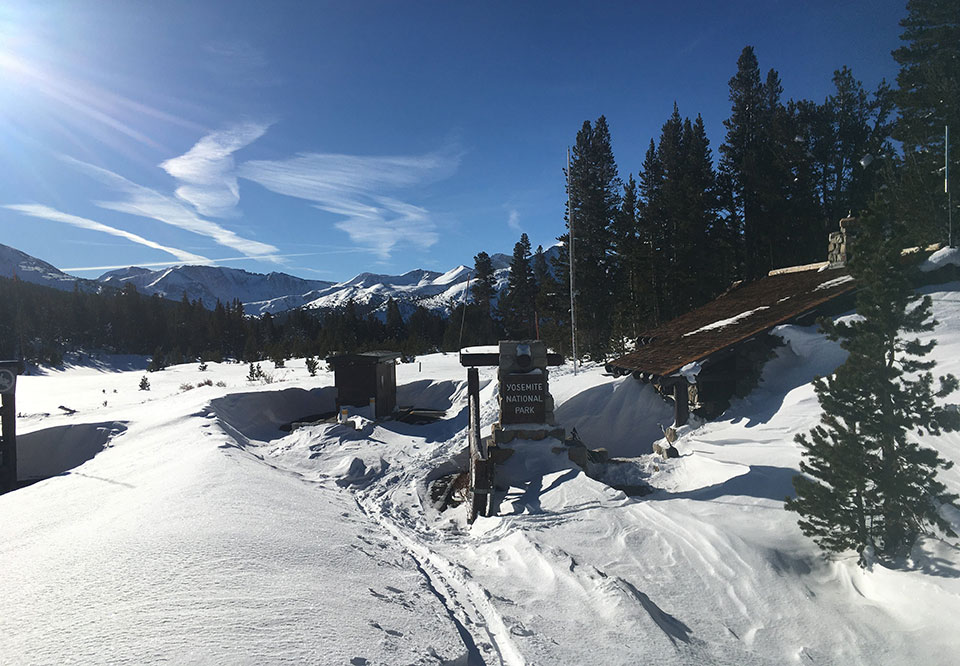New Snow: 17 inches
Settled Snow Depth: 58 inches
High Temperature: 36°F (January 2)
Low Temperature: -9°F (January 1)
December Weather Summary
New Snow: 171 inches (Historical Average: 58 inches)
Snow Water Equivalent: 10.54 inches (Historical Average: 4.40 inches)
High Temperature: 35.2°F (Historical Average: 40.0°F)
Low Temperature: 12.1°F (Historical Average: 10.7°F)
Average Temperature: 23.65°F (Historical Average 25.5°F)
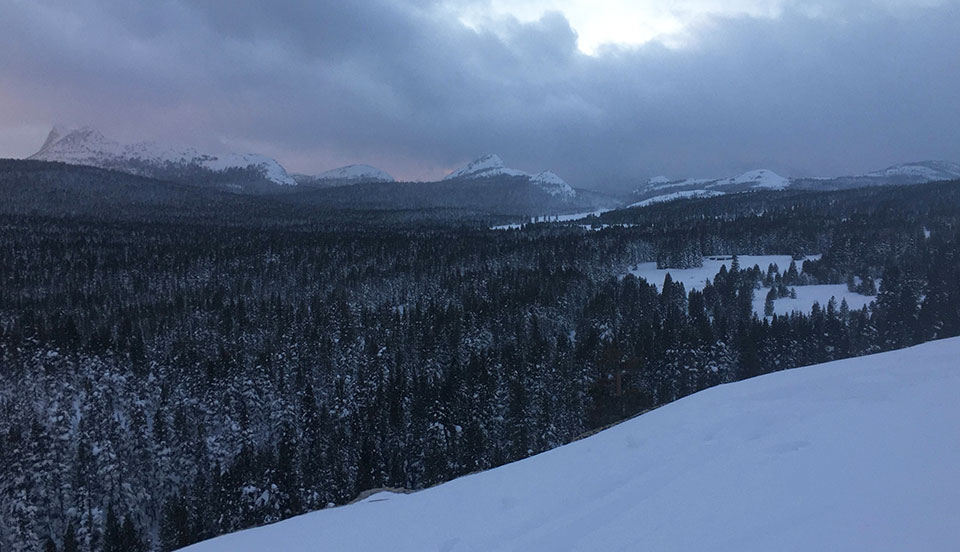
Ski Conditions and Weather
“Another year over and a new one just begun.” The last month of 2021 brought 37% of the annual average precipitation to the Tuolumne Meadows weather plot. This would certainly be considered the “feast” part of the feast-or-famine regime that has been the norm for our time working winter seasons here in Tuolumne Meadows. The best we can do is be grateful for what December 2021 has delivered and be hopeful that 2022 will bring more snowy deposits to the water bank that is the Sierra Nevada.
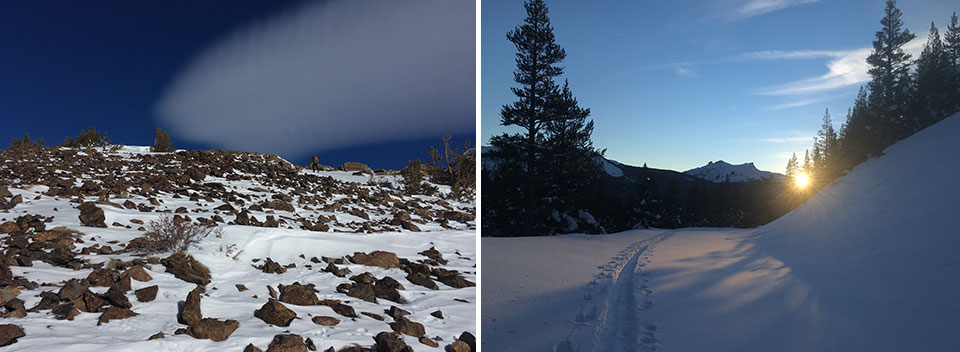
We ranged a bit further this week on patrol as the snow settled and we gained headway on our maintenance projects (snow removal). The trail breaking to Tioga Pass was moderately difficult and only took us about twice as long to cover the seven miles. Par for the course, as we broke out into Dana Meadow, the evidence of high winds during the December storms revealed itself in the form of scoured and sculpted slopes in the alpine terrain. The highest reaches of Mt. Dana are more bare ground than snow cover courtesy of the high prevailing southwest winds that occur during such storm cycles.
Avalanche and Snowpack Conditions
Please refer to the Eastern Sierra Avalanche Center (ESAC) for the avalanche advisory for this part of the Sierra Nevada.
Despite this fact, that snow blew somewhere (granted some of it never to be seen/skied again!). And, although some of it was wind effected, there were still plenty of soft spots to be found. We did not see evidence of instability or recent avalanches, but we departed the alpine terrain prior to the high winds of Monday night. Flagging was quite evident all day on Monday when we traveled primarily below tree line. The primary avalanche concern now is from wind slabs at all elevations. Visitors should always assess terrain and avalanche conditions in real time as the snow is quite dynamic in winter.
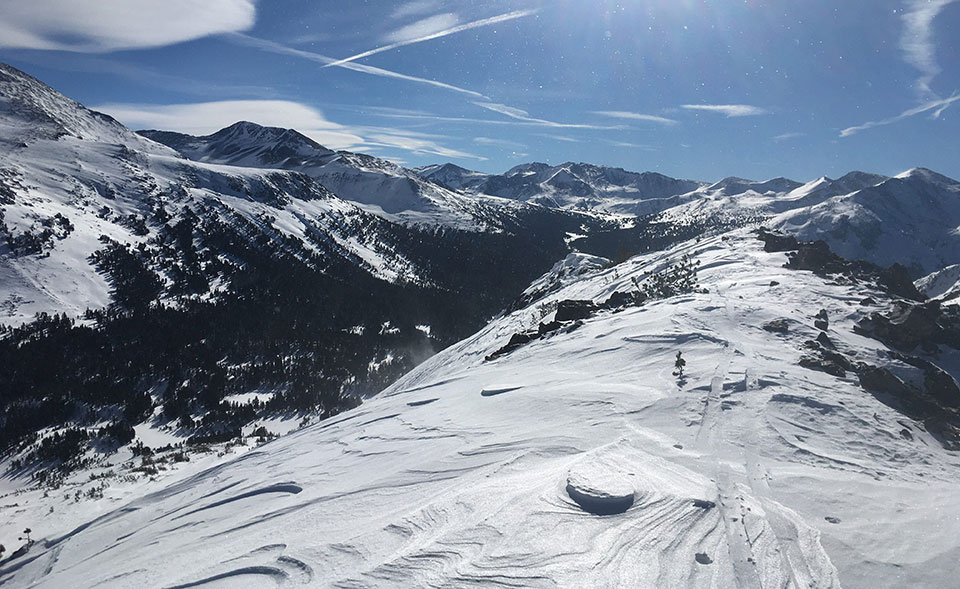
Snow Travel Tip
Unlike the winter rangers, snow surveyors, and ski mountaineers of old, our preferred method of travel out here is our waxless fish-scaled skis (versus waxable). Granted, there are still many applications for using temperature ski wax especially among the Nordic ski community. Fish scales don’t eliminate the need for skins on steep uphill terrain, but in the right snow conditions, one can travel over hill and dale for miles without them. And now, there are many metal edged shaped skis that perform great even in a more extreme mountain setting. We’re not sure if they’ve made a fish scaled split board yet! But we assume that’s what snowshoes are for. Hats off to those who have accomplished many an impressive mountain feat without such technology and much more “primitive” gear!
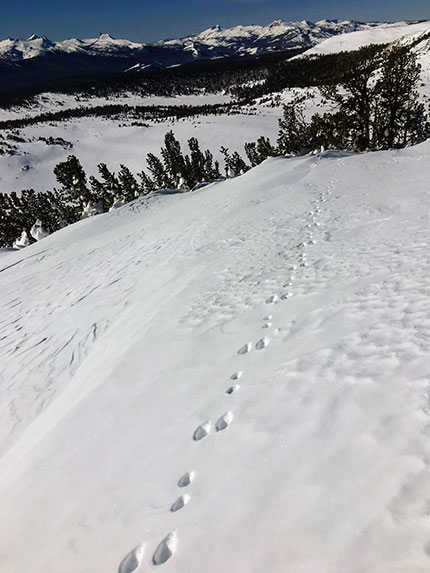
Wildlife
With the deep, soft snow, only the most adapted winter critters are able to travel far. The snowshoe hare (Lepus americanus) and Townsend’s hare (Lepus townsendii, aka white-tailed jackrabbit) are perfectly adapted for such conditions. In fact, they both molt in autumn and grow white hair to camouflage with the surrounding environment. Both species of the Leporidae family are born fully haired (“hare”-d) and pretty much ready to hop at birth unlike a rabbit. Confusingly, despite its nickname, the white-tailed “jack” rabbit is not a true rabbit species. It too is a hare (Lepus sp.).
Questions
The wilderness is open! But, especially during this pandemic where local resources may be limited, we implore you to be self-sufficient and not put others at risk. Please #RecreateResponsibly by planning and preparing thoroughly for your outdoor activities in the park.
Read through the following two pages before embarking on any day or overnight snow travel within this park:
You may contact us with any additional winter Tuolumne Meadows related questions.
Happy Skiing!
Laura and Rob Pilewski - Tuolumne Meadows winter rangers
